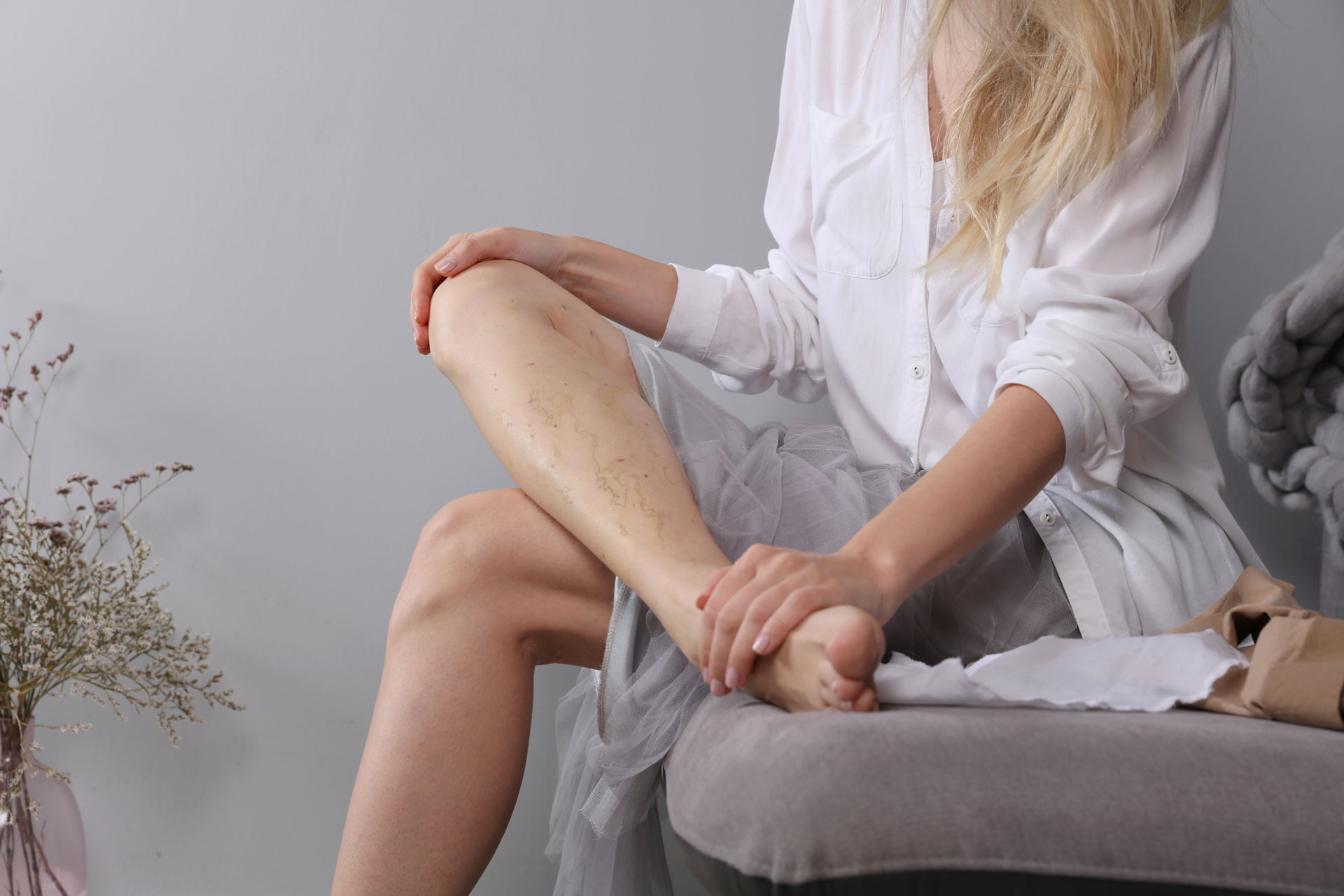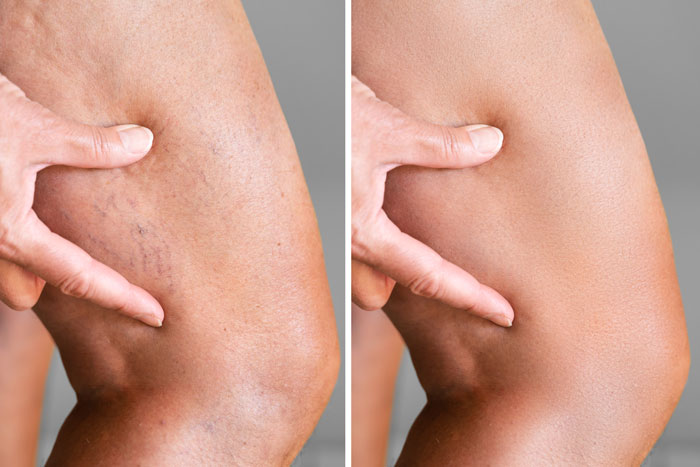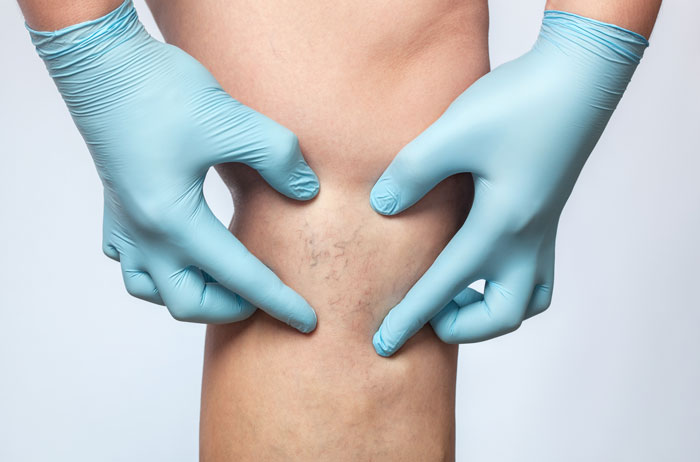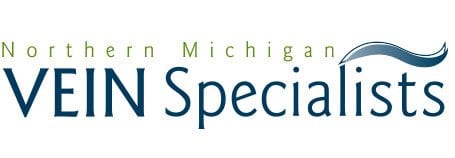
Varicose Vein Treatment
In Traverse City & Cadillac, MI
Varicose Vein Treatment
Varicose veins are the large, ropy blue veins that extend across the thigh or the calf. They are related to poor valve function in the major superficial veins themselves. They cause symptoms of aching, pain, and burning and can progress to a chronically swollen disfigured leg. These veins are a true medical problem and not cosmetic.


What Causes Varicose Veins?
Varicose veins were once part of the superficial venous system which generally returns only 5-10% of the blood flow from the legs back to the heart. Varicose veins begin when small one-way valves inside veins wear out over time. When these valves fail, blood falls down the veins with gravity causing excessive pressure to build up inside the veins. The veins swell and become tortuous. Once a vein is damaged by this process it can never again function as a healthy vein.
Varicose Vein Prevention
Regular exercise helps to pump blood up the legs and back to the heart against gravity. Getting enough rest, eating a healthy diet, and keeping your weight down help your overall health including your veins. Support stockings and herbal supplements have been shown to improve pain and swelling from varicose veins but have never been proven to heal bad veins or prevent healthy ones from deteriorating. Unfortunately, time and gravity cause veins in susceptible people to wear out over time. Once a vein has become varicose it will never function properly and should be eliminated.
What Will Happen If My Veins In My Legs Are NOT Treated?
Over time varicose veins always enlarge and become more symptomatic, forcing many people to alter their daily activities to try to decrease the pain. In severe cases, varicose veins can cause skin damage, ulcerations, and blood clots. These complications can be prevented by treating the varicose veins early. Get your vein consultation at either of our locations: Traverse City or Cadillac, MI.

MEET Dr. Brian Heeringa, Board Certified
Dr. Heeringa is a Board certified General Surgeon, a Fellow of the American College of Surgeons and a Diplomate of the American Board of Venous and Lymphatic Medicine. He and his team treat a broad spectrum of venous conditions ranging from spider veins to varicose veins to venous ulcers and everything in between. We also offer DVT risk assessment and can help manage post thrombotic syndrome. Call today to find out how our team can help you.
Symptoms Of Varicose Veins And CVI
Varicose veins and CVI are not just cosmetic disorders. Common Symptoms of CVI include:
- Aching
- Tired or heavy legs
- Nighttime cramps
- Swelling which is worse at the end of the day
- Edema
- Restless leg syndrome
- Itching
- Hyperpigmentation
- Bleeding
- Ulceration
Risk Factors for Developing Varicose Veins
- Family history
- Standing occupation
- Obesity
- Older age
- Female gender
- Pregnancy
- History of DVT (Deep Vein Thrombosis)
What Causes CVI (Chronic Venous Insufficiency)
CVI is typically due to dysfunction of the valves in your veins, but it can also be caused by obstruction as can be seen with blood clots. Unlike our arteries, which have a thick muscular wall and are therefore pressurized, the venous system is a low-flow, low-pressure system. The heart pumps the blood and the arteries carry that oxygenated blood to the tissues and maintain the blood pressure. Once the blood reaches the target organs or tissues, where the oxygen exchange happens, the blood must then be returned to the heart to get recirculated.
The venous system, however, is a low flow, low-pressure system. The veins in your leg are divided into both deep and superficial venous systems. The superficial veins include all the veins above the muscles and the deep veins are deep to the muscles.
As the deep veins are enclosed in the muscles and muscular fascia, they are under higher pressures than the superficial veins and the deep veins act as the primary “highway” for blood to be returned to the heart. The superficial veins normally have lower pressure and hold the blood until it can enter the deep system for return to the heart.
Perforating veins “perforate” the fascia surrounding the muscles and take blood from the superficial veins to the deep veins. When we walk or move our muscles, the calf acts as a pump to pump the venous blood out of the legs.
In the normal state, the veins have one-way valves, which prevent the backward flow of blood. If the valves are damaged or don’t function properly, gravity will pull that blood back down toward the feet. As this blood then pools in these veins, and more blood keeps entering the veins then those veins will dilate or stretch out. This then leads to varicose veins or blood will back up because of the increased pressure in the surface veins and present as spider veins.
In patients with venous ulcers, there is often an incompetent or non-functioning perforating vein underneath the ulcer. If we can find which veins are not functioning properly and close those off, your body will re-route that blood into veins that are working properly, and that typically will improve the patient’s symptoms as well as the appearance of their legs.
Are Varicose Vein Treatments Covered By Insurance?
Treatment is generally covered by insurance.
Varicose Veins Treatment Options:
- RFA Sclerotherapy
- Radiofrequency Ablation
- Ambulatory Phlebectomy
Ask Northern Michigan Vein Specialists for more information. Locations in Traverse City & Cadillac, MI.
